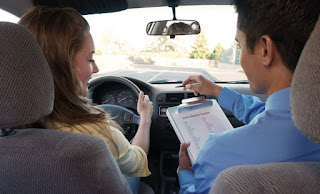Understanding Defensive Driving: How to Stay Safe on the Road
Defensive driving is a crucial skill that every motorist should master. By anticipating potential hazards and making informed decisions, defensive driving helps prevent accidents and ensures the safety of all road users. Here’s an in-depth look at defensive driving and how it can keep you safe on the road.
What Is Defensive Driving?
Defensive driving involves being proactive rather than reactive while behind the wheel. It means staying alert, anticipating potential dangers, and taking steps to avoid them. This approach not only minimizes risks but also enhances overall road safety for drivers, passengers, pedestrians, and cyclists.
Key Principles of Defensive Driving
1. Stay Focused and Alert
Avoid distractions like texting, eating, or adjusting the radio while driving. Keeping your full attention on the road helps you spot potential hazards early, such as sudden stops, erratic drivers, or changes in road conditions.
2. Maintain a Safe Following Distance
Always keep a safe distance between your car and the vehicle ahead. The three-second rule is a good guideline: choose a fixed point on the road and ensure your car passes it at least three seconds after the vehicle in front. This gives you enough time to react to sudden braking or unexpected maneuvers.
3. Anticipate Other Drivers’ Actions
Expect the unexpected. Assume that other drivers may make mistakes, such as running red lights, failing to signal, or suddenly changing lanes. Being prepared for these scenarios helps you react safely.
4. Adhere to Speed Limits
Driving at a safe and legal speed gives you more control over your vehicle and more time to react to hazards. Avoid the temptation to speed, especially in areas with heavy traffic, sharp turns, or poor visibility.
5. Check Your Blind Spots
Always check your blind spots before changing lanes or merging. Mirrors can’t show everything, so turning your head to glance over your shoulder ensures you don’t miss any vehicles or cyclists in adjacent lanes.
6. Adapt to Weather and Road Conditions
Adjust your driving style to match weather and road conditions. For example, in rain, snow, or fog, reduce your speed, increase your following distance, and use your headlights to improve visibility.
The Benefits of Defensive Driving
Improved Safety: Reduces the likelihood of accidents and injuries.
Lower Costs: Preventing collisions can save you money on repairs, insurance premiums, and medical bills.
Peace of Mind: Driving defensively provides confidence and reduces stress on the road.
How Driving Schools Can Help
Enrolling in a defensive driving course can enhance your skills and provide valuable insights into staying safe on the road. Many courses cover topics such as accident prevention, road hazard recognition, and proper vehicle handling. At [Your Driving School Name], our expert instructors teach practical defensive driving techniques to help you navigate any situation confidently.
Tips for Practicing Defensive Driving
Stay Calm and Patient: Avoid aggressive driving and don’t let emotions dictate your actions.
Use Your Indicators: Communicate your intentions clearly to other drivers.
Avoid Driving Under the Influence: Never drive while impaired by alcohol, drugs, or fatigue.
Keep Your Vehicle in Good Condition: Regular maintenance ensures your brakes, tires, and lights function properly.
Final Thoughts
Defensive driving is an essential skill that can make a significant difference in your safety and that of others on the road. By staying alert, anticipating hazards, and practicing safe driving habits, you can reduce risks and enjoy a more secure driving experience. If you’re looking to hone your defensive driving skills, contact [Your Driving School Name] today to enroll in one of our comprehensive courses. Let’s work together to make the roads safer for everyone.



Comments
Post a Comment